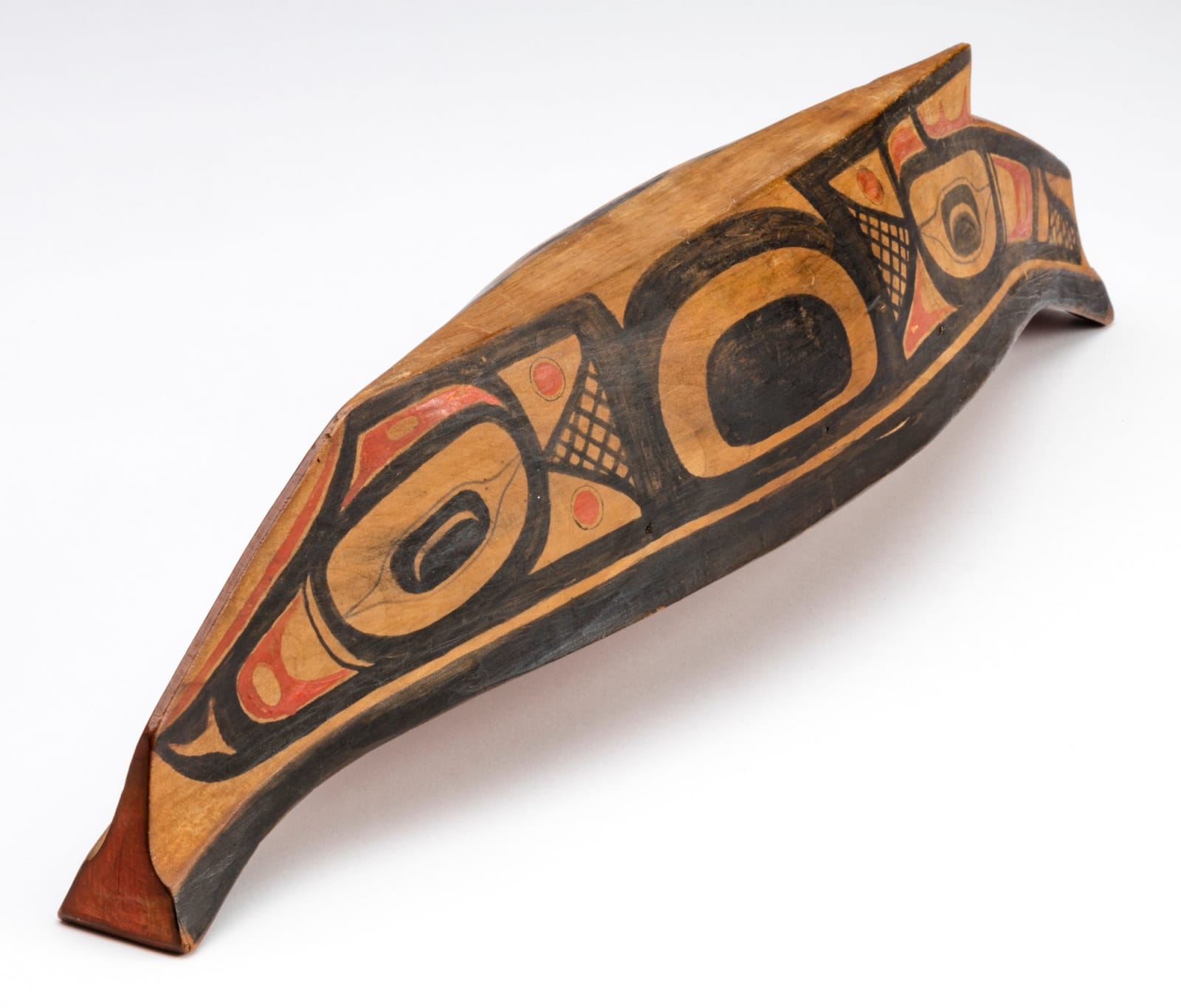-
Artworks
UNIDENTIFIED ARTIST, TLINGIT, SITKA, ALASKA
Model Canoe and Paddles, c. 1890 -1910alder wood and pigment, canoe: 4 x 17.5 x 4 in (10.2 x 44.5 x 10.2 cm), / paddles, each, approx.: 0.5 x 7.5 x 1 in (1.3 x 19.1 x 2.5 cm), measurement reflect dimension without custom metal stand
unsigned.
LOT 26
ESTIMATE: $3,000 — $5,000
PRICE REALIZED: $3,120.00Further images
This model of a northern style canoe has paintings that relate directly to other works known to have been created in Sitka, Alaska in the decades prior to and following...This model of a northern style canoe has paintings that relate directly to other works known to have been created in Sitka, Alaska in the decades prior to and following the turn of the twentieth century. The paintings appear to represent the head of a toothed wolf on the bow and a raven’s head on the stern. The bow end includes the short vertical cutwater with the overhanging bow in front of it. The outward flare under the gunwales is more developed at the ends, where it turns away the peaks of the waves and lifts the canoe up and over the swells. These are very seaworthy craft, and were admired as such by the first explorers and traders that encountered them.
Northwest Coast canoe models are not carved to scale, but are foreshortened for a given width, which makes the ends more prominent, a characteristic desired by the carvers who made them. A model made accurately to scale looks too small on the ends, which appear diminished in comparison to a full-sized canoe. Inside and just below the gunwales, a shallow rounded groove runs from end to end. On one hand, as an aesthetic, it lends a sense of grace and delicacy to the canoe, a characteristic echoed in carved bowls and wood or horn spoons and ladles. In practical terms, it eliminates unnecessary thickness behind the outward flare of the gunwale, thereby facilitating the outward bending of the sides after the process of steaming the hull is complete. Steaming the hull and spreading the sides alters a full-sized canoe from the parallel-sided form of the log of which it is carved, to a seaworthy boat that is wider and taller on the ends than was the log from which it was made. Model canoes don’t require steaming and spreading, and instead are carved to their final shape.
Steven C. Brown
References: For a late 19th century model canoe collected at Sitka see Aron L. Crowell, Rosita Worl, Paul C. Ongtooguk, and Dawn D. Biddison eds., Living Our Cutures, Sharing Our Heritage: The First Peoples of Alaska, (Washington, D.C.: Smithsonian Books, 2010), p. 204. For an older example and additional information on Tlingit style canoes and model canoes, see Helen Abbott, ed., The Spirit Within: Northwest Coast Native Art from the John H. Hauberg Collection, (Seattle: Seattle Art Museum, 1995), fig. 32, p. 86-89.
Provenance
Equinox Gallery, Vancouver;
Acquired from the above by the present Private Collection, Canada, 16 August 2008.
Join our mailing list
* denotes required fields
We will process the personal data you have supplied in accordance with our privacy policy (available on request). You can unsubscribe or change your preferences at any time by clicking the link in our emails.










